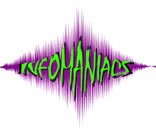| Beleaguered
by Windows NT 5.0 delays and the uncertain future of enterprise-class
NT clustering, Microsoft Corp. appears to be exploring a surprising
strategy: licensing distributed Unix technology from Silicon Graphics
Inc. The technology could be used to enhance NT's kernel, enabling
the operating system to support thousands of processors and participate
in the future of Computing Fabrics.
Although
Microsoft wouldn't comment on the talks, SGI officials would. "We
have been in discussion about ways to bring our technologies together
that will really help both of us," said Forrest Basket, chief
technology officer at SGI, in Mountain View, Calif. Specifically,
Basket said, SGI is in discussions to license technology from its
Cellular Irix operating system to Microsoft.
Such
a deal would allow Microsoft to run NT on SGI's upcoming SN1, a
Computing Fabric system that will incorporate more than 1,000 Intel
Merced processors. To achieve this goal, Microsoft must push NT
toward distributed processing.
Cellular
Irix, a distributed version of SGI's Unix, is currently in development,
with release targeted for the first quarter of 2000. The new version
promises to support a single address space across more than 1,000
tightly coupled processors. Cellular Irix would do that by defining
cells of processors and allocating processors and memory to them.
No other general-purpose version of Unix approaches this level of
scalability while maintaining a single system image. Sun's Solaris,
by comparison, currently supports no more than 64 processors.
Microsoft's
own efforts in the area of Computing Fabrics complement, rather
than duplicate, SGI's cellular operating system technology. Microsoft,
in its Millennium project, has focused on achieving tight coupling
of systems with distributed object software.
The
Millennium project, led by Rich Draves, of Mach operating system
fame, would allow for the automatic distribution of objects of COM+
(Component Object Model+) programs across systems of thousands of
processors without requiring any special programming at the application
level.
Now
working on the project's third phase, called Continuum, Draves'
group is applying to COM+ lessons learned from earlier prototypes
based on Java and COM.
Coupled
with COM-compliant Cellular Irix, Millennium could help Microsoft
distance itself from its NT woes and help it leapfrog Unix competitors.
Microsoft
and SGI are already sharing many technologies. The companies agreed
earlier this year to jointly develop Fahrenheit, a next-generation
three-dimensional graphics architecture based on SGI technology.
And SGI recently agreed to support Microsoft's COM architecture--in
addition to CORBA--in Irix.
By
licensing Cellular Irix technologies and integrating them with the
NT kernel and Millennium, Microsoft could finally provide enterprise-class,
highly scalable distributed processing while retaining control over
Windows services, GUIs, programming interfaces and the NTFS file
system.
Copyright
(c) 1998 Ziff-Davis Inc. All Rights Reserved.
Erick
Von Schweber is Chief Science Officer for Infomaniacs, a think tank
in Sedona, Ariz specializing in technology convergence.. Linda Von
Schweber is Chief Creative Officer for Infomaniacs. They can be
contacted at thinktank@infomaniacs.com
or www.infomaniacs.com.
|





